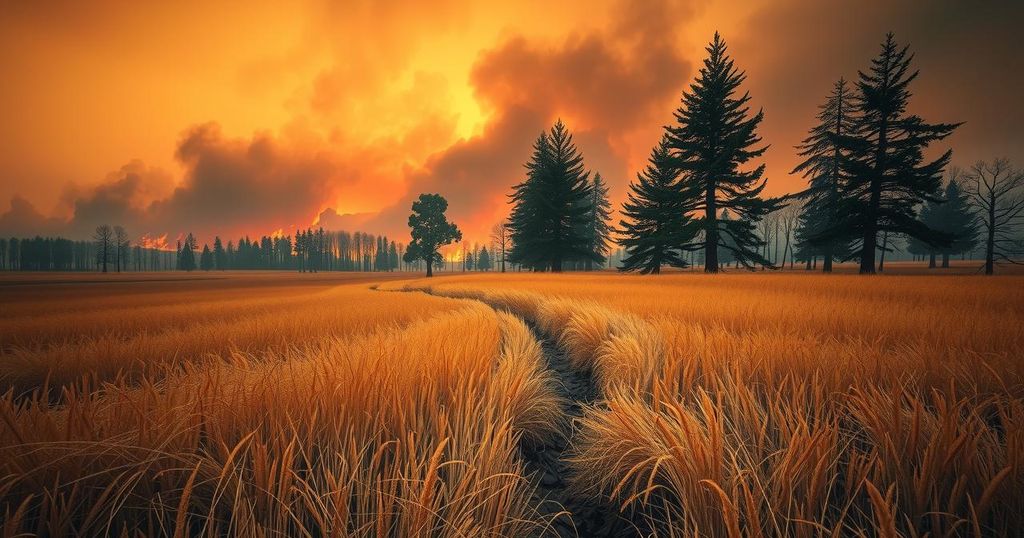Kenya Faces Escalating Wildfire Crisis with 180 Blazes Recorded Since January
Kenya has recorded 180 wildfires since January, destroying over 1,350 hectares of vegetation. The crisis, exacerbated by high temperatures and low humidity, is expected to continue until mid-March. The Kenya Forest Service has ramped up firefighting efforts, deploying additional resources and suspending all burning activities to mitigate risks.
Kenya is currently experiencing a significant rise in wildfires, with the Kenya Forest Service (KFS) reporting 180 incidents since January. These fires have devastated over 1,357 hectares of vegetation in various protected areas, including Maasai Mau, North Rift, Coast, Central Highlands, and Eastern Conservancies. The fire season, driven by high temperatures, low humidity, and robust winds, is projected to last until mid-March, creating an urgent crisis across the region.
The situation has deteriorated markedly over the past week, particularly in counties such as Isiolo and Garissa, as well as several coastal areas. In response to the escalating threat, KFS has issued a high fire danger rating across all its stations and has mobilized additional resources in collaboration with community forest associations and the Kenya Wildlife Service (KWS) to combat the blazes effectively. Furthermore, KFS has suspended all burning of vegetation in or near forested areas to minimize the risk of wildfires.
To bolster firefighting efforts, KFS has increased its operational capacity by deploying more firefighting equipment, including pick-up vehicles and troop carriers. The agency has also called back all staff on leave and established a smoke detection system aimed at enhancing fire monitoring in critical regions such as Mt Kenya and Aberdares. Recently, reports indicated two separate fires in Mt Kenya, one suspected to be due to arson, which has severely affected local grasslands.
KFS Nyeri County Conservator, Esther Mugo, noted that the fire in Gathiuri, which destroyed 150 hectares overnight, is believed to be an intentional act. She cautioned against the misconception among some community members that burning grasslands can encourage regrowth, asserting that such actions may disrupt forest ecosystems and biodiversity. Despite KFS efforts, containment has been challenging due to adverse weather conditions.
In another incident, a wildfire in the Embaringo section of Aberdare Forest was reported, adding to the three previous outbreaks in the same area within the week. Lucy Mwati, KWS Senior Assistant Director, highlighted the ongoing struggle to contain these incidents as new fires continue to arise due to persistent hot weather.
Additionally, a wildfire with an unknown cause has scorched several acres in the Lolldaiga Conservancy. Management of the conservancy is actively seeking community assistance to extinguish the flames. KFS emphasizes that it remains vigilant and is prepared to address any further outbreaks, despite having contained recent fires in several crucial areas.
In conclusion, Kenya is facing a substantial surge in wildfires, with 180 incidents reported in the first two months of the year, leading to significant vegetation loss across various conservancies. The Kenya Forest Service is actively combating this crisis by enhancing firefighting resources and collaborating with local communities. However, the high risk of further outbreaks remains until mid-March, necessitating public vigilance and prompt reporting of fire signs.
Original Source: eastleighvoice.co.ke




Post Comment